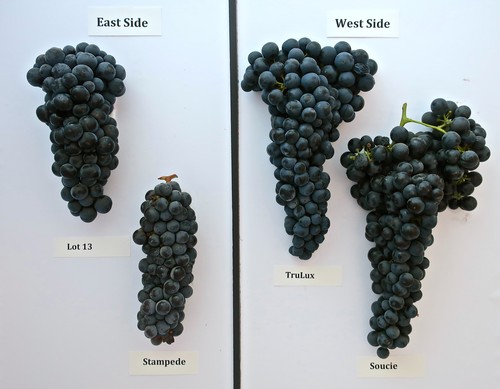Letters from Lodi
An insightful and objective look at viticulture and winemaking from the Lodi
Appellation and the growers and vintners behind these crafts. Told from the
perspective of multi-award winning wine journalist, Randy Caparoso.
Is appreciation of wine as varietals becoming passé? Part 2, pain and controversy
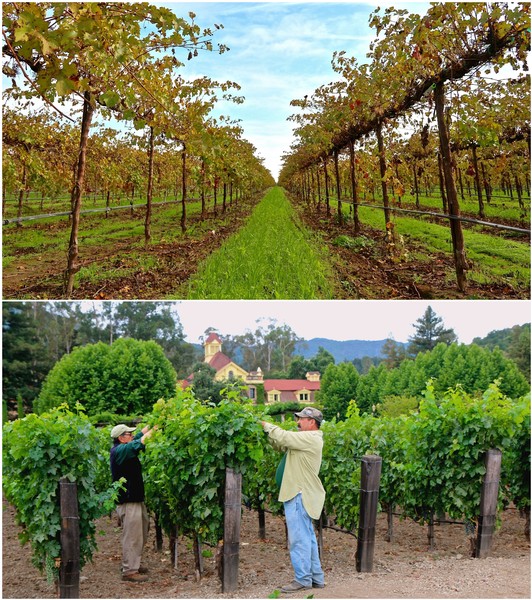
Contrasting Cabernet Sauvignon vineyards: (Top) high cordon machine pruned trellis on single wire in Jahant-Lodi AVA; (bottom) vertical shoot position trellising (usually cultivated by hand) in Rutherford-Napa Valley.
Continued from previous post: Is appreciation of wine as varietals becoming passé? Part 1, history, terroir, rebellion
Pain and controversy wrought by push to go beyond varietal sameness
When many (if not most) Americans think of "California wine," they still think of Napa Valley, even though Napa Valley produces only 4% of California wines (re Capstone California). Non-Californians still have problems finding places like Lodi (which produces 20.5% of California wines), Lake County or Paso Robles on a map. For all they know, Santa Lucia Highlands is located north of the Bay and Anderson Valley is south of it.
Yet even in Napa Valley, which has set the standard for varietal wines such as Cabernet Sauvignon over the past 50 years, there has been a little gnashing of teeth over the way top wines are now being produced, perceived, rated or appreciated.
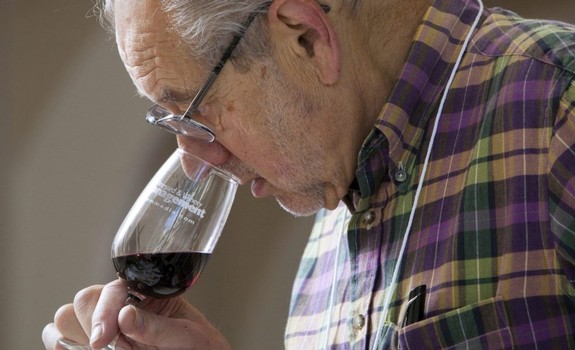
Dan Berger, a veteran California wine journalist who has recently become disenchanted with the way many of the industry's most vaunted brands are producing varietal wines. spiritedbiz.com.
Back in 2010, for instance, the The Press Democrat published negative observations from veteran journalist Dan Berger, who has always cultivated a conventional, varietal-focused taste in wine. Berger was pretty brutal, saying:
Cabernet has undergone a makeover that has, probably forever, made it little more than a parody of itself, entering a realm that 20 years ago I would never have believed... A long book could be devoted to this sad tale of decline.
What bugged Berger most at the time was that many of these Cabernet Sauvignons, by his estimation, simply didn't taste like they come from Napa Valley, but rather more like winemaking shenanigans...
This is wine that some reviewers say smells like chocolate, mocha, smoke, and roasted nuts. These aren't aromas derived from fruit; they come from the smoked oak barrels in which the wines were aged, clearly an idea that was never at play decades ago.
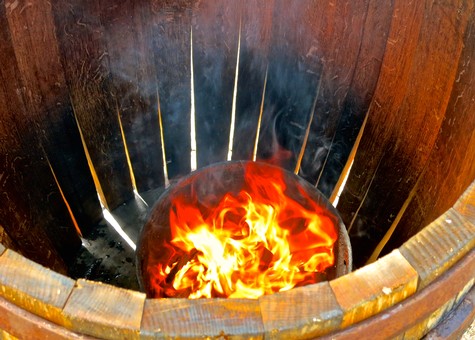
The open-fire "toasting" of oak barrels in a California cooperage—the use of which more and more critics are citing as conducive to wines that taste more like a winemaker's manipulations (or, "art") than the regions or even grapes from which many wines are made.
In July of 2022, Berger returned to the same subject in a Napa Valley Register article entitled "Cabernet on the Rocks," writing about how "Cab became so malformed... far too much sameness" resulting from the use of "high-tech gadgets... so we can standardize all reds... to be dense... the darkest and most concentrated."
Most recently, this past March of 2024, another industry insider by the name of Karen MacNeil made almost shocking comments (for MacNeil, at least, who is a longtime cheerleader for California wine) on Napa Valley Cabernet Sauvignons, hitting things more on the head than Berger:
All of these wineries employ [the same] consultant... All of these wineries make plush, soft, well-structured, very expensive Napa Valley Cabernet Sauvignon... Is it a problem if many of them taste largely the same?

Popular wine author Karen MacNeil: While known as a Napa Valley "insider," MacNeil has recently issued sharp criticisms of prestige brands of Cabernet Sauvignon fashioned to show few, if any, sensory characteristics of their place of orgin. emily-e-martin.com.
By implication, MacNeil was saying that, yes, many of the best Napa Valley Cabernet Sauvignons now taste the same, even when grown is drastically different parts of the valley; adding, "You can't say the Napa Valley has 16 AVAs and is making wines that are reflective of terroir, and then have a group of wines that all taste very similar."
The message Berger, MacNeil, and an increasing number of other industry spokespersons seem to be broadcasting is this: It is time for the California wine industry to grow up and move beyond the production of wines based upon the style of winemakers or brands rather than the substance of individual vineyards. It's time to define the best wines by how well they capture their sense of place, not varietal character. The industry is ready for that.
Perhaps not all of them, but many consumers are ready for this. They want to begin appreciating American wines for where they're grown, the same way consumers have always appreciated the classic European wines. But it is the American wine industry that seems to be getting in the way of that.
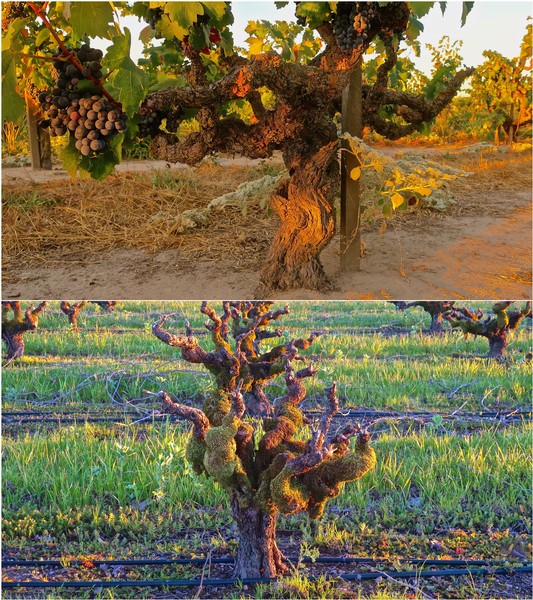
Two classic old vine Zinfandel plantings: Marian's (top) in Lodi, and Papera (bottom) in Sonoma County, both known for wines with aromatically and structurally distinctive sensory qualities, difficult to duplicate without extreme winemaking manipulation.
Over the past ten or so years we have been experiencing something similar in Lodi. Before that time, whenever a local winery produced a Zinfandel, the undisputed king of Lodi grapes, it was usually done in a way that captures as much varietal character of the grape as possible. Problem is, the ideal varietal character of California Zinfandel was never that of wines grown in Lodi. The varietal character of Zinfandel was defined more by the types of wines grown in Sonoma County, a region long associated with deep, dark, rich, full bodied and generously oaked styles of Zinfandel.
To produce a Sonoma style Zinfandel from grapes grown in Lodi, though, a Lodi vintner would have to go through all sorts of contortions to capture the color, tannin and fruit profile reasonably close to Sonoma's. This involved picking grapes ultra-ripe and high in sugar to capture a rich "jammy" varietal character, and then adding water to reduce the alcohol to around 15%, while also adding acid to make up for the lack of natural acidity in the overripe grapes.
Graphic differences between Zinfandel clusters grown on the east (left) vs. west side of the Lodi appellation, resulting in wines with distinctly different sensory qualities, even more different from Zinfandel clusters and wines grown in coastal regions such as Sonoma County and Napa Valley.
Then, in order to attain a darker color and spice, you'd need to add a generous proportion of Petite Sirah (up to 24.9%) to make up for the lighter color and soft tannin structure more natural to Lodi-grown Zinfandel. It was also common practice to select specific yeasts and enzymes to boost fermentation esters to achieve certain aromas, adding oak dust or chips to fermenting vats to enhance color and phenolic content, and aging in richly toasted barrels to beef up textures and aromas even further.
That was then. Things began to change in 2012, when a small group of local vintners began producing the first batch of Zinfandels bottled under the Lodi Native label. Their objective: To capture a purer style of Lodi Zinfandel that emphasizes the character of individual heritage vineyards. They did that by following self-imposed protocols such as native yeast fermentation and zero inputs, including aging strictly in neutral (i.e., previously used) barrels to take "oak" completely out of the flavor spectrum. The immediate reaction among media as well as consumers who first tasted the Lodi Natives was, almost across the board, "Why, these wines don't taste like Zinfandel at all!"
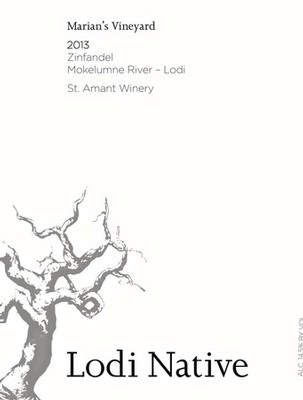
Lodi Native label, which puts more emphasis on the vineyard source, with the varietal identity in smaller letters.
The Lodi Native Zinfandels never tasted like conventional conceptions of Zinfandel simply because that wasn't the project's goal. The wines were meant to taste like the vineyards they came from; that taste being much more floral and delicately red fruited, not really "jammy," sometimes distinctively earthy or black tea-like, more gentle in tannin and feel, yet every bit as edgy in acidity as Sonoma style Zinfandels.
One positive outcome from the Lodi Native project was its eventual impact: More wineries in Lodi have begun producing Zinfandels that taste more like where they come from, and less like an arbitrary notion of varietal character. The best part: The more many consumers taste this, the more they like it. They're learning to savor the taste of Lodi rather than standard industry ideas of what California Zinfandel is supposed to taste like.
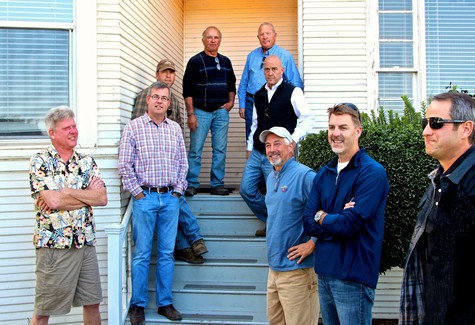
Most of the original Lodi Native growers and producers (from left): Layne Montgomery (m2), Stuart Spencer (St. Amant), Bruce Fry (Mohr-Fry), Joe Maley (Maley Bros.), Jerry Fry (Mohr-Fry), Mike McCay (McCay Cellars), Tim Holdener (Macchia), Ryan Sherman (Fields Family), and Chad Joseph (consultant, Maley Bros.).
This, as it were, has also been happening elsewhere, not just in Lodi. For going on twenty, thirty years, other California producers have been producing Zinfandels from different vineyards and appellations up and down the California coast in ways that specifically emphasize sensory profiles unique to each place. The simple logic being, if you are producing four, five, or (in the case of Turley Wine Cellars) over twenty different Zinfandels, why in the world would you want them all to taste the same? Varietal uniformity defeats the purpose.
Many California vintners have been finding origin-driven transparency in wines, even when not looking. Despite the fact that Napa Valley Cabernet Sauvignon is still thought of as a varietal that always needs to be big, dark and intense, the fact of the matter is that more and more consumers have become aware that not all Napa Valley Cabernets end up the same. For instance, many Napa Valley Cabernet lovers are now looking for bottlings grown in Coombsville, which makes a distinctively different style of the varietal from those of Rutherford, St. Helena, Diamond Mountain, Atlas Peak, Stags Leap, or any other parts of the valley.
By the same token, consumers are quickly picking up on the unique tastes of Cabernet Sauvignons grown in regions as diverse as Sonoma's Alexander Valley, the Adelaida District of Paso Robles, Red Hills Lake County, or El Dorado in the Sierra Foothills, all of which can be drastically different from any of those from Napa Valley.
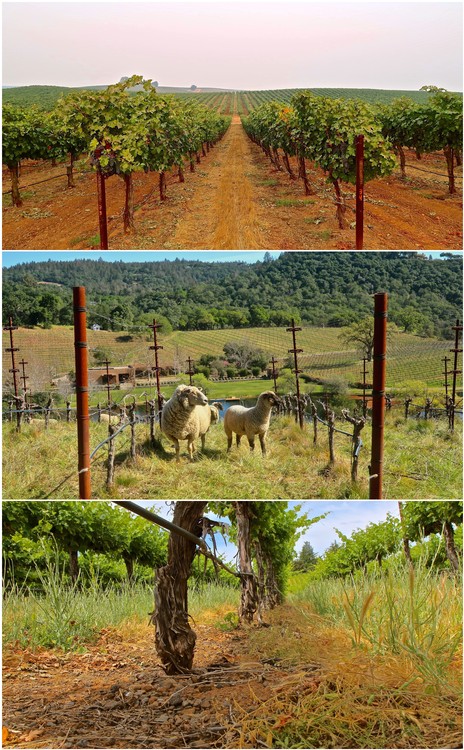
Cabernet Sauvignon vineyards in contrasting appellations: (from top) Borden Ranch-Lodi, Rutherford-Napa Valley and Red Hills Lake County. While all three AVAs share commonality of hillside volcanic topography, factors such as altitude, climate and UV make each of these regions unique unto themselves, yielding distinctly different styles of Cabernet Sauvignon. What a shame to impose winemaking techniques to make wines from all three regions taste the same!
Not too long ago, the varietal character of American Chardonnay was closely associated with the rich, opulent styles of the grape grown in the Russian River Valley. Today, more and more consumers are starting to appreciated the leaner styles of Chardonnay grown in Oregon's Willamette Valley, the minerally styles grown in Santa Cruz Mountains or Sta. Rita Hills, or the airy, chaparral or woodsy scented styles of Santa Lucia Highlands or West Sonoma Coast.
Sometimes the differences in varietal profiles captured in different regions are subtle, and sometimes they're graphic; although most of the time, quite frankly, the differences barely exist at all, primarily because most of the industry still follows the conventional route of prioritizing uniformity of varietal character over sense of place.
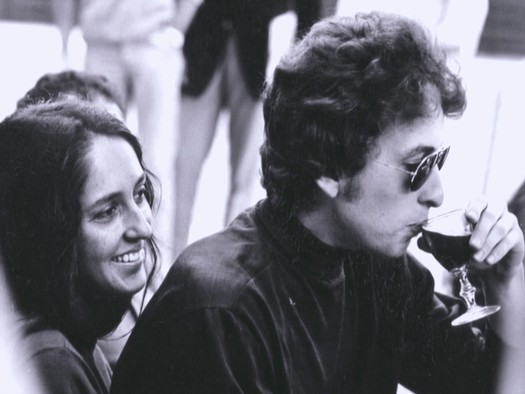
From the We-Were-All-Once-Young-and-Beautiful department: Joan Baez gazing at Bob Dylan adoringly while he sips wine.
All the same, something is happening here, slowly but surely, even if not everyone knows what it is, or is accepting of it. Will this be an answer to what today's youngest generation of consumers are looking for?
All we know is that right now many of them are not fully satisfied, and who can blame them? Predictable commercial styles of varietal wines—especially ones designed primarily to "score" points and sell for big bucks—bug a lot of wine lovers, not just young ones.
Perhaps an industry turn towards what comes more natural to wine—that is, tastes reflecting where they are grown rather than how they are made or manipulated—may finally bring the latest generation into the fold of wine aficionados. Time may very well tell, just as it did in Europe, where shackles of varietal conformity were thrown off long ago.

Rare (?) sighting of Gen Zers enjoying wine. iwsc.net.
